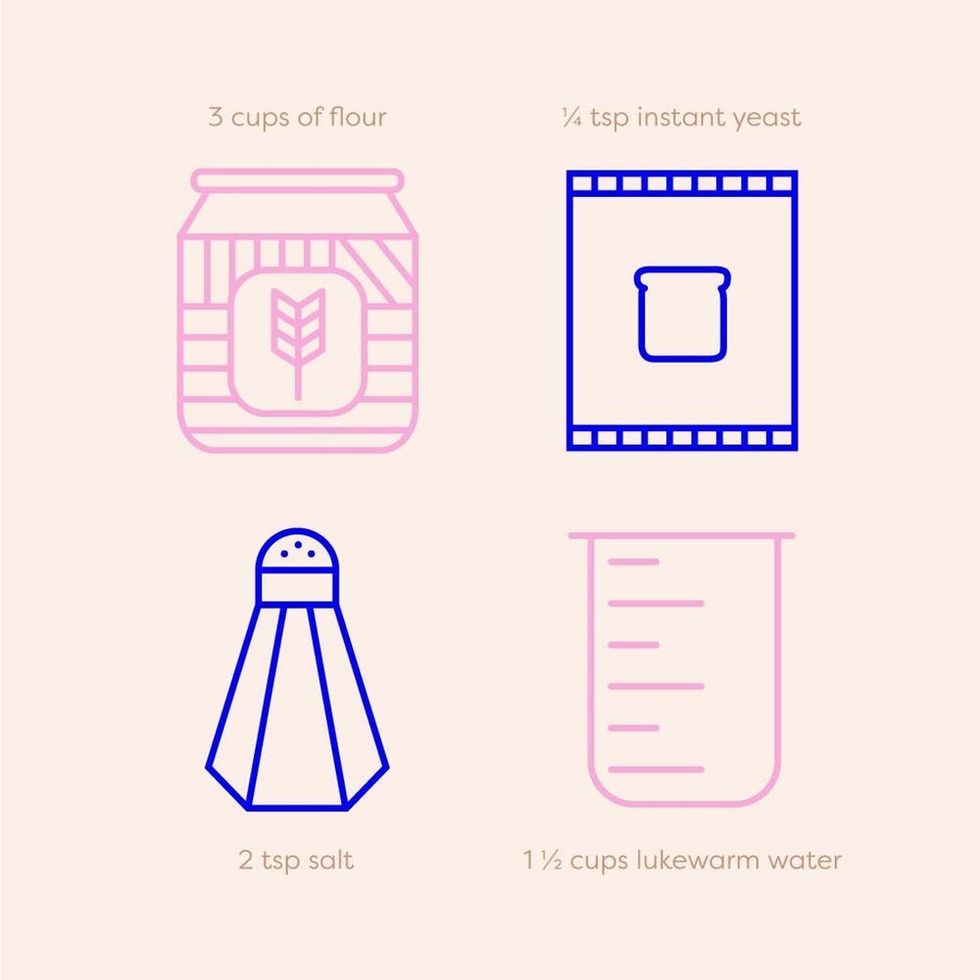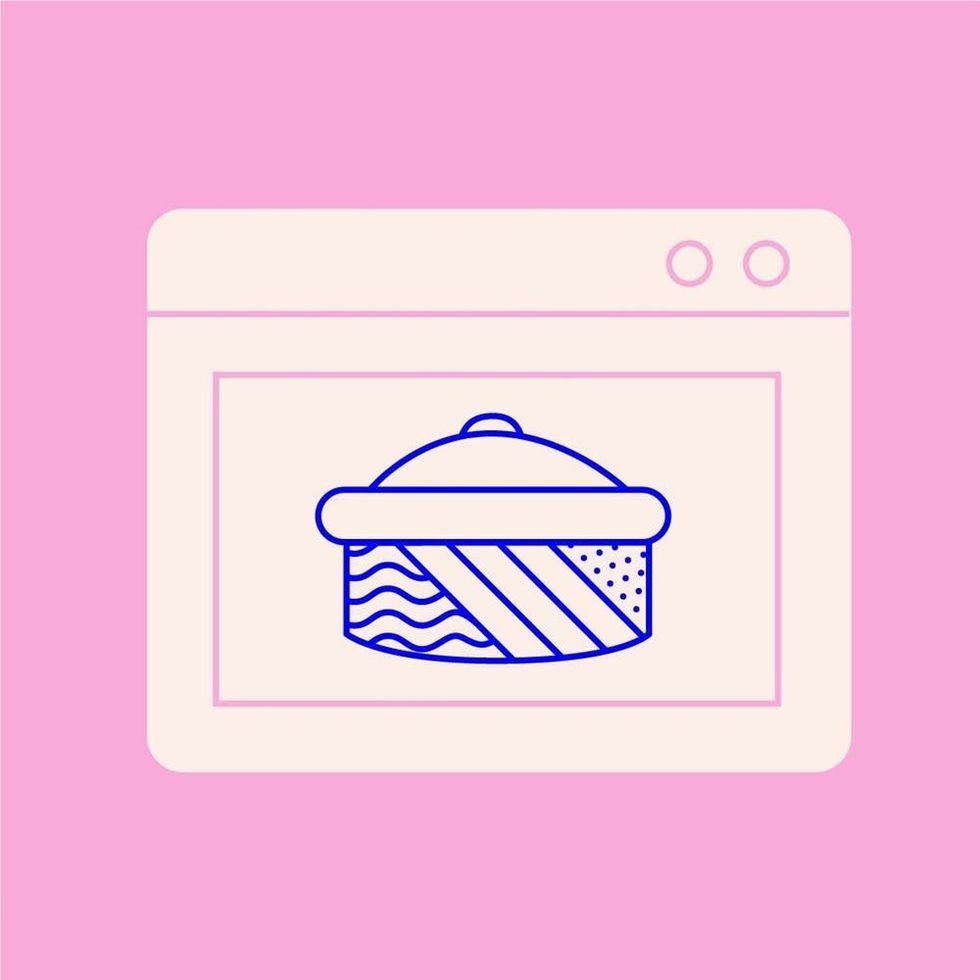How to Make Easy No-Knead Dutch Oven Bread

Nothing beats fresh bread. The smell alone is intoxicating and can turn a regular ol’ sandwich into a fancy artisanal delight. If you’ve got a Dutch oven kickin’ around, then you’re in luck, because we’ve got an easy peasy recipe that’ll yield you fresh bread all season long!

What you’ll need:
- 3 cups all-purpose flour
- 2 teaspoons kosher salt
- 1/4 teaspoons instant yeast (you can use active dry yeast — same amount — but your dough may take a little longer to rise, so keep that in mind.
- 1 1/4 cups warm water

Add the flour, salt, and yeast to a large bowl. Whisk the mixture until it’s well-blended, then slowly pour in the warm water and stir with a fork or wooden or silicone spoon until your mixture becomes gluey and a bit ragged. Lift your dough a bit to check and see if there’s excess flour beneath it. If so, add a splash of water to the excess flour and combine it with the gluey dough. This is to avoid any hardened floury bits at the base of your dough.

Tightly cover the bowl with plastic wrap and set it to rest in a warm area of the house for at least 10-12 hours. Help the process along and leave your dough on the counter near a dishwasher if it’s been running, or close to the oven if you’ve recently had it on.

Once your dough is good to go, prep a clean surface, like a wooden cutting board or counter space. Sprinkle a generous amount of flour over the surface to prevent any sticking. Unwrap the bowl of dough, set the plastic wrap aside, and gently peel and dump the dough out onto the floured surface. Sprinkle a small amount of flour over the top of the dough. Then, grab one side of the dough and fold it over itself once or twice. Cover it with the plastic wrap and let it sit for 15 minutes.

Have a floured tea towel ready. Once the 15 minutes is up, discard the plastic wrap. One by one, grab each of the four sides of the dough and pull to the center to shape your dough into a ball (or something that resembles a ball). Once all sides have been folded, quickly flip the dough over so that the smooth side is face-up and seams are face-down. Place onto the floured tea towel, and sprinkle a bit of flour on top of the dough. Cover with the other tea towel and let it rest for two hours, or until it has doubled in size. (Note: If it’s cool in your house, this process might take a bit longer. Again, leaving your dough somewhere warm in the house will help. Or set the oven for the lowest temp and let the dough sit next to it for two hours, until it’s time to pre-heat the oven for baking.)

Twenty minutes before baking time, pre-heat the oven to 450 degrees Fahrenheit and place your Dutch oven inside the oven with the lid on. Once the oven hits 450 degrees Fahrenheit, put on your oven mitts and remove the Dutch; set it somewhere safe, and take off the lid. Remove the top tea towel from off the dough, slide your hand underneath the dough, flip it over into your other hand, and carefully transfer it into the dutch oven, seam-side facing upward. (Do it over the sink to minimize a floury mess!) If the dough sticks to the towel at all, simply peel it off and use more flour on the towel next time. Replace the lid onto the Dutch oven and return it to the oven for 30 minutes. Once 30 minutes has passed, remove the lid and let the bread bake for an additional 10-15 minutes, or until the top crust is a crackled and golden in color. As a test, tap the loaf with the back of a spoon; it should sound hollow.

Once your bread is ready, remove the Dutch oven from the oven and, with a silicone spatula or wooden spoon, carefully transfer the bread to a cooling rack to cool completely. During this time, take in the smell; take in the crackling sounds from within the bread, and get your butter out and ready! When it’s time, use a large serrated bread knife to slice into it. Slather butter onto a slice and mow down — after all, the straight-out-of-the-oven taste test is crucial, wouldn’t you agree?
Looking for easy cooking tips and hacks? Follow us on Pinterest!



















